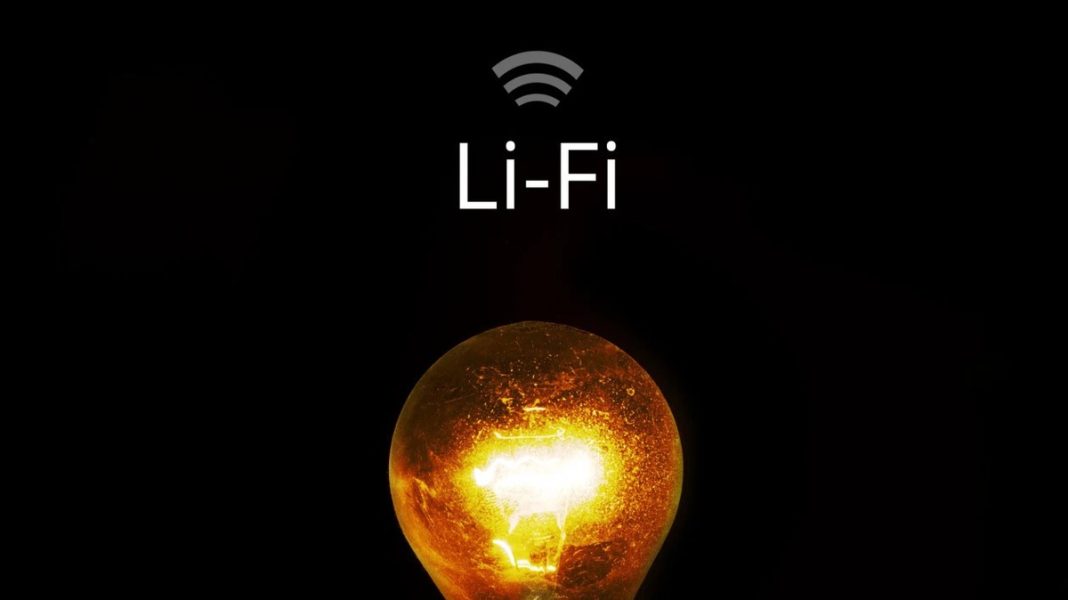Imagine a light antenna that would revolutionize the experience of transmitting data for generations to come! Yes, the global leader in LiFi technology, pureLiFi, launched the Light Antenna Module at the Mobile World Congress 2023, which is currently being staged in Barcelona, Spain. This module, deemed to be compliant with IEEE 802.11bb Light Communication standard, can enable LiFi connections in devices and smartphones. Let’s know more about LiFi in this cover…
What Is The LiFi Communication System?
LiFi stands for Light Fidelity, which is a bidirectional, high-speed wireless system that transmits data via light-emitting diodes (LEDs) or infrared light. In other words, while conventional technologies like 4G and 5G use the radio frequency of the electromagnetic spectrum, LiFi relies on the visible part of the spectrum. LiFi uses only a light source with a chipset to transmit an internet signal. Although it seems like this is quite a new feature to be discovered, it is quite appalling to know that LiFi was unveiled back in 2011. LiFi technology was first proposed by a German scientist, Harald Haas. It is a major development over the WiFi technology that is being used all over the world now because of its offering an edge over existing technologies, given its stable, latent-free, almost 100 times high-speed internet connectivity than WiFi.
How Does It Work?
As already mentioned, LiFi uses the Visible Light Communications (VLC) system for the transmission of data. Primarily, a VLC system utilizes either of the two light sources—an LED or a fluorescent bulb—for receiving light signals. Generally, an LED is preferred over any other substitute, given its high output rate, capacity to emit light in a very restricted, narrow band of wavelengths, and competent switching on and off abilities.
Rudimentarily, when a constant current is applied to a bulb (an LED in this case), high-speed photons are emitted. Since LEDs are semiconductor devices, or diodes to be exact, the input current and output light beam can be modulated at a very high speed, which, when detected by the detector, converts it back to electric current. It is in this manner that LiFi makes it possible to transmit data at a faster pace and provides smooth, highly efficient internet services. Let us sneak into the details of its working…
Transmitting The Signal
As the light beams are emitted by an LED bulb, the bulb also has a component of a LiFi router with it. The router has a cable connection that provides the internet. Now, the information is sent to the router as an electric signal. The signal is encoded by the super-fast switching of the LED source.
Receiving The Signal
The device that is supposed to operate with the LiFi network has to be compulsorily in the coverage area (as light cannot pass through walls) to receive the data emitted by the router via the LiFi receiver. The device (smartphone, tab, or laptop) must have an IC that can capture the light signal and convert it into an electrical signal. The gadget then again transforms analog into binary and processes it into meaningful information.
How Different Is LiFi From WiFi?
In many aspects, the two connectivities are different from each other. Let us see this in detail.
Components Requirement: A complete WiFi system requires a router and a connecting device. Whereas, a LiFi system requires an LED bulb, a photodetector, and an LED driver.
Passage Through Walls: First of all, in WiFi, radio frequency signals can be accessed across barriers of rooms. But that is not the case in the case of LiFi, as it entirely depends upon the LED. Thus, one can say that LiFi provides a much more secure data transfer. WiFi can cover a distance of about 30-40 meters, which is much wider compared to the coverage of LiFi (approx 10 meters) due to its dependency criteria.
Frequency Band: WiFi operates between three completely different frequency bands (2.4 GHz, 4.9 GHz, and 5 GHz). Whereas LiFi works in the visible light range of 380 nm to 780 nm, which is almost 10,000 times the RF spectrum range.
Speed Of Data Transfer: The speed of data transfer over WiFi is around 150 Mbps to 2 Gbps. LiFi has a speed of about 1 GB/s.
Interference: WiFi technology undergoes interference-related issues from nearby access points. LiFi is absolutely devoid of any such overlapping interference problems.
Working Environment: WiFi can only operate in less dense environments due to its interfering tendencies, unlike LiFi, which can even operate in underwater, salty sea environments.
LiFi Applications
- In extremely secure environments, the usage of many WiFi connections in a closed area, all competing to access the bandwidth, can lower the download speeds. This can be easily averted by using LiFi, which has separate access points with 100 times greater speeds.
- LiFi communications can be an excellent and viable option for underwater sea miners, divers, submarines, etc., as radio waves are easily absorbed by water.
- Sensitive data like medical records of patients in hospitals can be protected, that too without using wires using this tech.
- LiFi in airplanes can be a lifesaver. Having access to higher bandwidth and a much faster internet connection, streaming content, and downloading movies will provide a smoother traveling experience.
- Industry 4.0 can have an overall new recognition with LiFi enabling lively real-time data transmission, low latency, and maximum user mobility.
Is The Technology Cost-Efficient?
One can say that since its power consumption is much lower than that of WiFi, this technology is actually quite energy efficient.
Challenges Related To Its Implementation
The biggest challenge in using this technology is the constant requirement for a visible light source. Compared to WiFi, which can provide a continuous internet connection spread over a wide area, LiFi would rather become useless. Apart from that, LiFi has high initial installation charges, so that can be an issue too.
Also, since it is still in its nascent stage of evolution, not many devices are compatible with it. We might have to wait a couple of years to go along with it.
Conclusion
Returning to the question of whether LiFi will completely replace WiFi, one needs to understand that LiFi technology was not developed to overshadow WiFi. Though WiFi has some distinctive infrastructural advantages over LiFi, it is highly unlikely to imagine a complete shutdown of the flourishing wireless fidelity. Rather, it would be quite interesting to have a wider range of technologies available to us at our disposal and to have the free will to make a choice. LiFi must be looked at as a complementary networking service to improve the performance of existing tech as well as to provide relief to the already clogged radio spectrum.
See more: World’s Most Cutting-Edge Unmanned Traffic Management System: Skye UTM Unveiled


